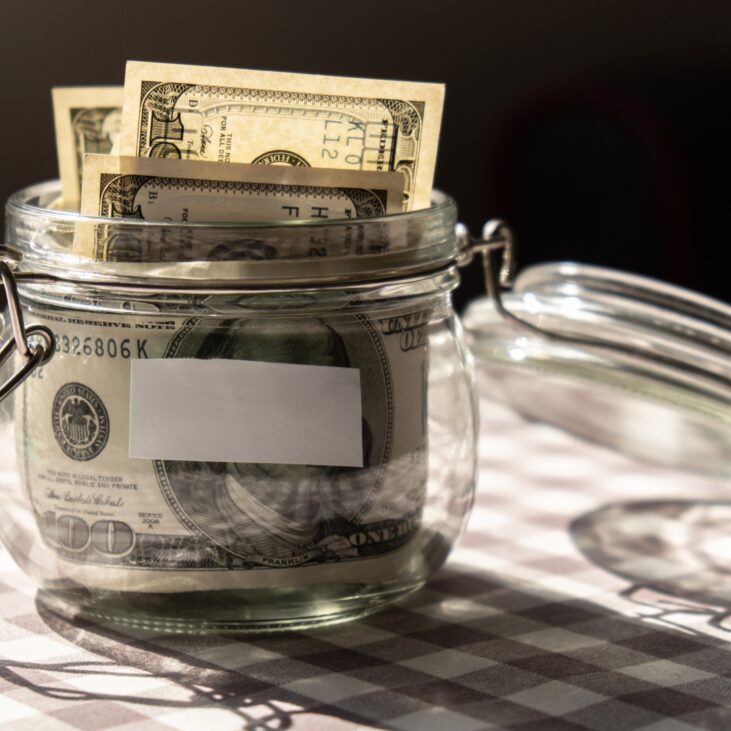Takeaways
- Checking accounts are bank accounts designed to help facilitate day-to-day needs.
- Checking accounts help you park cash before paying expenses or routing to savings.
- Some checking accounts have minimum account balances and overdraft fees.
- Checking accounts don’t pay much interest, if at all.
- The FDIC insures deposits on your checking account for up to $250,000.
Everyone needs a checking account. Checking accounts are used to help facilitate regular cash deposits and withdrawals. Checking accounts are where your paychecks are deposited and subsequently routed throughout your financial ecosystem. Think of checking accounts as the core plumbing to your financial infrastructure.
Selecting the best checking account will set you up for financial success. Let’s look at everything you need to know about checking accounts.
What is a Checking Account?
A checking account is a deposit account held at a bank or credit union that helps facilitate day-to-day deposits and withdrawals. A checking account allows easy access to your funds. They also support regular withdrawals with debit cards, in-person cash withdrawals, ATMs, wires, transfers, and writing checks. A checking account is ideal for processing short-term and recurring expenses.
With the flexibility to make withdrawals and transfers, banks don’t offer high levels of interest on checking accounts. If you want to earn interest on your cash, you need to open a savings account. Moving excess cash from your checking account to a high-yield savings account can help you reach your financial goals.
Smart Money -> What is FDIC Insurance?
Smart Money -> 6 Steps to Open a Checking Account
How Does a Checking Account Work?
Opening a checking account is very easy. You can do it today.
With just a couple of minutes, you can open a checking account. All you need to have accessible is your current personal information. To open a checking account, the bank will request your basic personal data, including your address, income, and other ancillary information.
Once your checking account opens, you need to fund the account. Some checking accounts require minimum account balances. But once your account is active, you can deposit and withdraw funds, use your debit card, and write or deposit checks.
Best Checking Accounts
Check out Smart Money's best checking accounts to select the best checking account for you.
Pros of Checking Accounts
Here are four advantages of setting up a checking account:
1. Easy To Set Up
You can set up a checking account quickly, with no impact on your financial health or credit score. Setting up a checking account takes a couple of minutes. You can start the process online or in person at a local branch office. Since you will likely have your checking account for many years, research to get the best checking account possible. If you decide to change checking accounts, it is a relatively seamless process (more of a hassle).
2. Add or Withdraw Funds
One of the main attractions of checking accounts is that you can use them for everyday purchases, deposits, and withdrawals. This makes them ideal for processing recurring payments, depositing paychecks, and routing funds to other bank accounts or investments. Checking accounts can act as the switchboard to your financial system
Checking accounts are highly liquid. You can transfer funds online or in person and access your cash virtually anywhere.
4. Federally Insured
Cons of Checking Accounts
Here are four disadvantages to a checking account:
1. Maintenance Fees
Traditional checking accounts have a monthly service fee. However, there are ways to get this fee waived by meeting certain requirements, such as maintaining a minimum account deposit. Consult with your bank to see how you can get these fees waived and explore free checking accounts.
2. Overdraft Fees
An overdraft fee is charged when your withdrawals exceed the available checking account balance. So, if you don’t have enough funds in your checking account to cover a debit card purchase or check payment, your bank will pay the expense anyway, and you may be charged an overdraft fee.
However, there are ways to prevent overdraft fees. You can get an optional overdraft protection plan, which guarantees your payment will clear without incurring fees. Most overdraft protection plans link to your savings account or credit card. If an expense exceeds your available checking account balance, it will be pulled from your savings or charged to your credit card instead.
If you don’t get overdraft protection, you can elect to have overdraft charges declined. Alternatively, you can let charges process and incur an overdraft charge.
3. Less Interest Income
Checking accounts have lower interest rates than savings or long-term deposit accounts because of their easy access to funds.
To counterweight low interest with a checking account, you can boost your interest income by storing your cash in a high-interest-rate checking account.
4. Access to Cash
We list this as a pro and a con because quick access to your cash can make it tempting to spend money. However, placing your money into a savings account, a fixed-term investment like a certificate of deposit, or investing in stocks increases the barrier to moving your funds, which can help you blunt temporary urges to spend frivolously.
Why You Need a Checking Account
Most people use a checking account for their employers to direct deposit paychecks. This allows your checking account to be the hub of your financial world. From your checking account, you can dictate how funds should flow to cover expenses based on your budget. For example, if you follow the 50/30/20 budget, you could set up an automatic transfer from your checking account to your high-yield savings account to shore up your emergency fund.
Are My Checking Funds Insured?
The short answer is most likely. Thankfully, you do not need to apply for FDIC insurance. Checking accounts held at an FDIC-insured bank or financial institution have automatic insurance coverage. The FDIC insures up to at least $250,000 per depositor, per intuition, per ownership category [1].
Smart Money -> How Does FDIC Insurance Work?
6 Types of Checking Accounts
1. Traditional Checking Account:You can open a traditional checking account at most banks and credit unions. This is a type of account where you can use a debit card and checks to withdraw and deposit funds. Most traditional checking accounts now offer robust online bill pay services and banking services.
Smart Money -> Best Checking Accounts of 2024
2. Premium Checking Account: This is where you want to be. Premium checking accounts offer perks galore for customers, such as no-fee checks, waived out-of-network ATM fees, and no-fee month orders. If you have a premium checking account and choose to take out a mortgage with your bank or credit union, you can even get discounted mortgage interest rates.
Smart Money-> 9 Steps to Quickly Save for A Down Payment
3. Student Checking Account: It is tough being a student and maintaining a pristine financial situation. Because students traditionally don’t earn high incomes, student checking accounts offer some reprieve from traditional checking fees. Student checking accounts have basic features like debit card services and check-writing capabilities. Usually, these accounts have low minimum balances and zero monthly service fees.
4. Business Checking Account: Whether you start a sole proprietorship, LLC, or corporation, you will need a checking account if you are a business owner. Starting your own business can be a terrific financial decision. Securing a great business checking account should be a must-have. Business checking accounts usually have higher minimum balances and fee structures. They also offer debt and credit card incentives to help business owners waive fees.
Smart Money -> Need More Money? Try These 29 Side Hustle Ideas
5. Senior Checking Account: For older banking customers some banks offer Senior Checking Accounts. While not all banks offer accounts specifically for seniors, the banks that do offer easily waived fees, rate discounts, low daily minimum balances, and debit and checking services. These accounts are supposed to make banking as easy and frictionless as possible.
Smart Money -> What is a Roth IRA?
Smart Money -> What is a Traditional IRA?
6. High-Interest Checking Account: Are you looking to boost your interest income with your checking account? A high-interest checking account could be what you need. These accounts offer the benefits of traditional checking with the added punch of a higher Annual Percentage Yeild (APY). Like choosing a high-yield savings account, you want to ensure you aren’t only chasing yield. Make sure the checking account doesn’t have high overdraft fees, monthly fees, or minimum balances.
Smart Money -> What is a High-Yield Savings Account?
Smart Summary
Opening a checking account at a great bank should be part of your financial to-do list. The best checking accounts offer you easy access to funds, facilitate making deposits on the go, act as a central hub to your finances, and don’t charge for low account balances. Having an easy-to-use checking account is a smart money move because it will increase your quality of life and make managing your money fun.
[1] FDIC. What We Do. Last Accessed August 31. 2023











